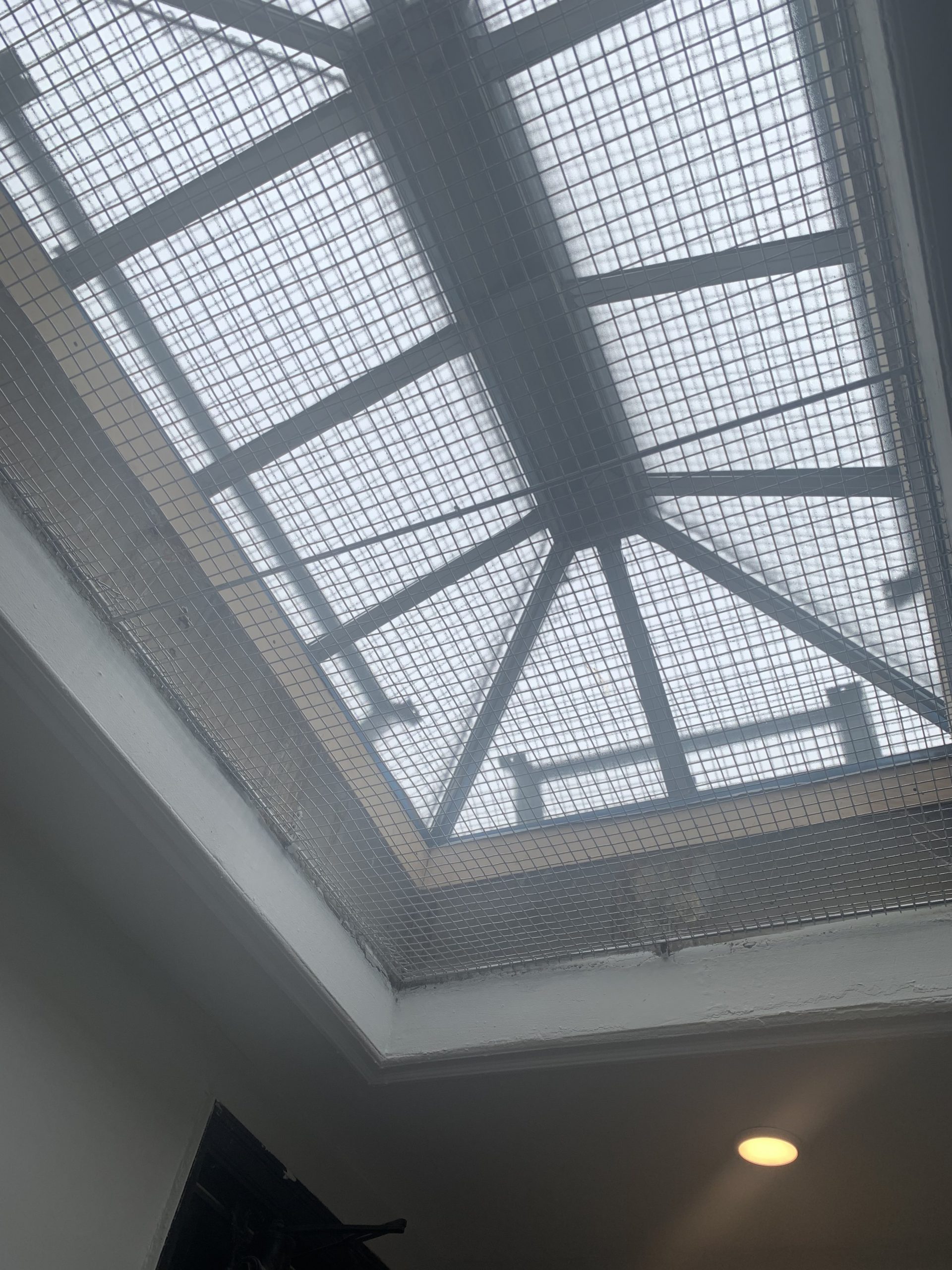
BY WINNIE McCROY | On Saturday, February 27, the 2324 Chelsea Tenant Association’s President, Thuy Pham, convened a Zoom forum of experts in the field of securing and maintaining appropriate residential housing ventilation during the age of COVID-19. While their overall concern was the health and safety of all New Yorkers during this extended lockdown, the tenants were also prompted to action over ventilation problems in their own buildings.
Tenants of 225 W. 23rd St. and 220 W. 24th St.—residential buildings connected by a shared courtyard—have a history of complaints against the management companies, including Akelius. The latest allegations include the painting of common hallways with a strong-smelling, oil-based paint and epoxy while simultaneously replacing hallway windows capable of being opened with new sealed, single-pane windows.
“This pandemic has claimed over 25,000 lives in New York City, the majority infected via airborne transmission indoors,” said Laurence Frommer VP of the 2324 Chelsea Tenant Association), who claimed that due to Akelius’ “reckless disregard for health and safety, I was infected with COVID along with others in the building. The [New York City Department of Buildings] codes don’t match up with [Centers for Disease Control and Prevention] guidelines on ventilation, and existing codes are not rigorously enforced. This is literally a life and death matter.”
They gathered together this panel of experts to advise on how to accurately measure air quality and ventilation, how to get city agencies to inspect air flow problems, how to hold accountable owners who repeatedly falsify their building certifications, and to take a look at some of the health problems that can result from poor ventilation.
This panel consisted of Monona Rossol, an expert in chemical safety; John Twomey, CEO of Indoor Air Quality Champs; Amalia Cuadra, a licensed professional engineer in energy efficiency; Diana Florence, attorney and former chief of the Manhattan District Attorney’s Construction Fraud Task Force; and Marlene Taylor, Assistant Director, HIV and Addiction Services at Ryan Chelsea-Clinton Community Health Center. The forum was sponsored by several community organizations, including The Housing and Neighborhood Revitalization Committee of the American Planning Association, NY Metro Chapter; Manhattan Community Board 4; Housing, Health and Human Services (CB4 Sub-Committee); Save Chelsea; Chelsea Council of Block Associations; West Side Neighborhood Alliance; 308 W. 30th Street Tenant Association; and 2324 Chelsea Tenant Association. Housing Conservation Coordinators provided the Zoom platform.
Experts Recommend HEPA Filters | No-nonsense chemical safety engineer Monona Rossol jumped right into a discussion of CFMs, (cubic feet per minute) the volume of air moved by a fan per minute. She explained the updated American Society of Heating, Refrigerating and Air-Conditioning Engineers [ASHRAE] 62.1 Indoor Air Quality code (62.2 for residential buildings) that mandate 100% outside air (or upgraded filters for recirculated air). Rossol also spoke of the need to disable on-demand CO2 systems, and to add high-efficiency particulate air [HEPA] purifiers when the HVAC [heating, ventilation and air-conditioning] is insufficient, which turns the HVAC into an industrial system.
“And now, they are in my playpen, because that’s where I design,” she said. Rossol’s work as a safety consultant for SAG-AFTRA mandates film sets have an American Industrial Hygiene Association [AIHA] 95% relative risk reduction point. And she gets them to that point, saying, “That’s why the film industry is open. It is not 100 percent safe, because it’s not 100 percent safe anywhere. But these standards have been enforced all over the country, from huge arenas to 20-foot makeup trailers. We shoot in residences, and we follow these same rules.”
In an ideal world, buildings would have well-placed windows on both sides with exhaust fans to forcibly ensure full cross-ventilation, with no inclement weather to mandate the closing of these windows. In the real world, noted Rossol, you are going to need to buy HEPA filters appropriate for the room size—and not the cheap box filters that “make me want to beat the crap out of whoever did that.”
And don’t accept CADR [clean air delivery rate] cubic feet per minute standards of filter efficiency. “Tell them to shove that where the sun don’t shine,” said Rossol, advising folks to learn the CFMs and demand a filter efficiency of 0.3 microns, because the COVID-19 virus diameter is 0.125 microns. These virus particles can attach to saliva, lung liquids, mucous and debris, and can stay airborne for up to 16 hours.

Rossol also warned residents to disabuse themselves of any notion that an air conditioner would provide adequate filtration. A window AC unit has no real filter, she said. It simply cools a room’s existing air and recirculates it, with no ventilation or filtration.
So, what kind of filters does ASHRAE recommend to keep people safe? A MERV 6 [minimum efficiency reporting value] is what they say. But that’s not enough for Rossol or her clients.
They require a MERV 13–17 filter. MERV 13 allows 50 percent of small particles to get through. And MERV 17 is essentially a HEPA filter. But buildings can’t just toss a higher-grade MERV filter in their existing system, because it offers a higher resistance the system may not be able to handle and upgrading can be expensive.
To get the right balance, Rossol takes a three-pronged approach: Factor 1 deals with the air changes per hour—it takes 46-69 minutes to completely replace the air in a room. Factor 2 deals with the MERV filter—the higher the better. And Factor 3 deals with the outdoor air percentage; anything below MERV 13 requires 100 percent outdoor air as well, because if someone in a room is sick and the filter is MERV 6 or below, they’re spreading the virus.
Said Rossol in closing, “If they won’t do 100 percent outdoor air, you need to compensate with your own HEPA filter. CO2 also causes ill effects, and if you’re indoors you’re inhaling it from your own or someone else’s lungs.” Contact Rossol at actsnyc@cs.com if you are interested in attending her March 27 seminar.
Helping make these holistic ventilation refits in mid- and high-rise residential buildings is CEO John Twomey’s Indoor Air Quality Champs. This contracting company specializes in cleaning, inspection, restoration, air balancing, fire damper installation and cutting-edge robotic mastic sealing of multi-family ventilation systems. Air is invisible—but it matters more than you think.
“If some random leaky pipe was collecting water into a bucket, the leak would immediately be taken care of, and not by picking up the bucket and drinking it up,” said Twomey. “The same analogy needs to be made about the air you breathe. [HVAC] are health and safety systems and are not to be treated any differently from other systems that anyone working on a building must actively monitor.”
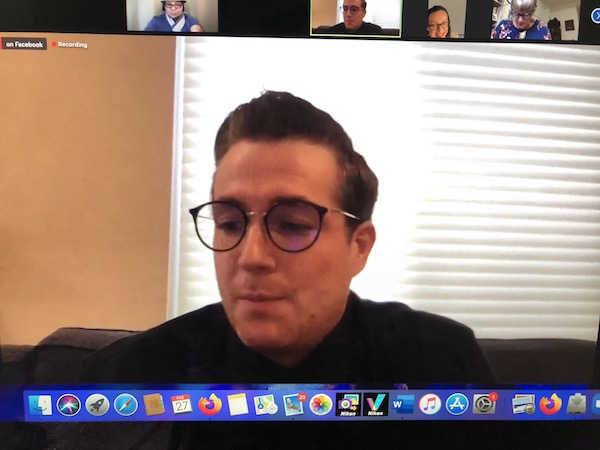
Referring back to the sealed windows in the Akelius building, Twomey bemoaned the loss of the cross ventilation. Now, airflow must come from the bottom of the building up. “Ask your management company if they would do that in their own home,” advised Twomey. “If they say yes, they’re lying, and it’s not okay… But they don’t care because they are saving money, which comes ahead of tenants’ well-being and safety.”
Be wary of owners who install energy-efficient fans to take advantage of local tax breaks. Twomey said that these fans are great—as long as the exhaust rate is appropriate. The [NYC] Department of Buildings (DOB) has put airflow codes into place, but unfortunately, nobody enforces them. If you want an inspection in your building, you will need to hound the Housing Preservation & Development [HPD] to come by. If they do inspect, what you are likely to see is the old ‘toilet-tissue test.’
“They hold a tissue over the vent. If it blows out, it’s not operational. If it sucks in, it’s working,” said Twomey. “It’s a sad thing that government agencies use this tissue test as a generally acceptable way to test CFMs, assuming that one sheet of toilet paper equals about 5 CFMs. But think about that test. Did they pick one-ply or two? There are so many variables, it’s a sad way of dealing with something that affects so many people.”
And if your building fails even this simple ‘toilet-tissue test,’ what can you do? Nothing. Maybe a violation will be issued—or maybe not. If the building owners fail to make changes, there’s no punishment. This is what happened in his own building, said Twomey, spurring him to action.
“If we can rally around the point of making sure a building’s ventilation system is properly addressed and inspected, I think we’ll be in a much better place,” said Twomey. “We need the help of elected officials. These building owners cannot be allowed to self-certify.”
Enforcing Penalties for Bad Operators | Working to hold these bad operators to task via existing law is attorney Diana Florence, a candidate for Manhattan District Attorney. From the 1929 Multiple Dwelling Law 217 regarding appropriate ventilation in tenement hallways, to more recent Local Laws 87 and 97, New York State has long regulated building ventilation and energy use.
“Local Law 87 is a report card on a building’s energy—like how restaurants have letter grades, buildings get energy consumption grades,” said Florence. “And Local Law 97 is the real doozy, passed in 2019 to be like a Green New Deal. It is meant to lower the carbon emissions of our buildings by 80 percent by 2050. But the bigger conversation is about air quality and the responsibilities of building owners.”
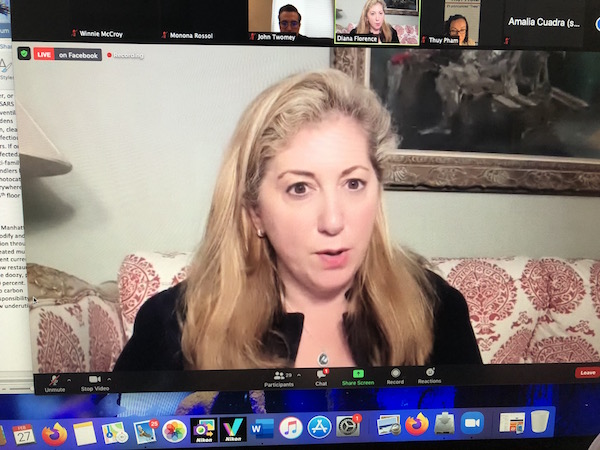
Criminal enforcement of these codes is underutilized, said Florence. When it comes to real estate owners tend to point to other bad operators and say, ‘Everyone fakes their inspection information.’ But if you look at it as criminal, said Florence, no court will ever acquit a robber who argued, ‘All my friends are robbing people!’
“What a crazy world we’re living in that expensive lawyers can say that in court with a straight face, and that prosecutors would agree, pointing to the HPD as responsible,” said Florence. “Companies just factor in these enforcement fines as the cost of business… submitting false statements to the city and just saying, ‘Oh, we’ll pay a fine.’ Self-certified isn’t cleared, and we have to change this point of view. It’s not about a fine, it’s about real enforcement with teeth.”
Florence said any false statement made to a government agency is a Class E felony. And any false certification filed by someone in authority at a real estate management company is subject to prosecution.
“Any DA can prosecute that person for lying in their documents, and that’s what needs to start happening,” said Florence. “Anyone can say they forgot to do this once, but we need to look for the patterns. If it’s the same management company or landlord using the same corrupt design professionals, they should be in the position to lose their license. That’s where the real power comes in. People make different choices when enforcement is consistent and has teeth.”

Bad Ventilation Leads to Bad Health | It’s been more than a century since doctors realized the impact fresh air has on health and recovery, showed anecdotally via lower rates of infection in “open-air” hospitals during the 1918 pandemic. And Richard A. Hobday and John W. Cason’s The Open-Air Treatment of Pandemic Influenza, published in September 2011, shows that severely ill flu patients who were nursed outdoors recovered better than those treated indoors.
But people don’t live outside. In cities like ours, they live stacked above each other in apartments, sharing the same HVAC infrastructure. And because COVID-19 is an airborne virus, proper ventilation is very important to avoid transmission.
Amalia Cuadra, a licensed professional engineer in energy efficiency, presented a chilling example of HVAC gone wrong. Back in 2003 during the Hong Kong SARS outbreak, 321 people were infected in the Amoy Gardens Apartments. One-third of these were transmitted via the ventilation system of a column of vertically stacked apartment units. This, said Cuadra, is why you must be vigilant about good ventilation.
Cuadra works under the acronym CDC: Clean infected surfaces; Dilute the air in buildings to reduce the concentration of potential infectious aerosols (i.e., bring in fresh air); and Contain airborne viruses and exhausts to the outdoors.
“If you’re not wearing masks and even one person is infected, within four hours, everyone in that room will be infected,” said Cuadra. “With masks on everyone and some ventilation, that risk is significantly reduced.”
In multi-family buildings, you need a MERV 13 or higher filter, or the gold standard HEPA filter—although that is not appropriate for most air handlers because it will cause a large pressure drop. Other filtration mechanisms include ultraviolet germicidal, photocatalytic oxidation, or bipolar ionization. Whatever you use, it needs to be strong enough to do the job.
“In most buildings you will have 20 kitchens stacked on top of each other with no windows,” said Cuadra. “So, if your exhaust is responsible for ventilating everything from the fifth floor to the 25th floor, you need to make sure that the top register and the bottom both get 50 CFMs.”
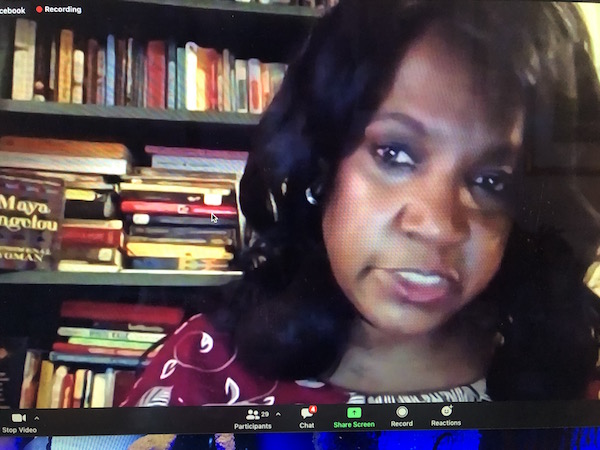
Marlene Taylor, Assistant Director of Addiction Health Services at the Ryan Chelsea-Clinton Health Center, confirmed that the virus is mostly spread via close contact, person-to-person transmission. It’s good to adopt a six-foot safety zone, but Taylor said she had seen evidence of a high concentration in droplets that had traveled further via coughing, sneezing, talking or singing.
“Two masks is something we recommend. It’s about the layering and the snug fit,” said Taylor. And even after getting the vaccine, “You should still continue to wear the masks. We know the vaccine lasts at least three to six months, but there is no certainty about anything else because we just don’t have those numbers.”
Members of the 30-person audience then posed some questions for the panelists. When David Hemenway (Secretary of the 2324 Chelsea Tenant Association) asked Taylor whether the vaccine would help those with ventilation problems, she replied, “You can’t say with certainty that someone is ever 100 percent protected… Regardless of how low the risk is, it’s just not worth it.”
Cuadra urged concerned viewers to keep their exposure to others short, saying, “the less time you are with someone and the further they are from you, the less likely you are to get infected.” But she added that masks work and you should wear them, even if you’re just walking in your building hallway, and if the elevator is occupied, wait until the next one comes.
Michele Gomez complained about the poor air quality in New York City Housing Authority buildings, saying “NYCHA gets away with murder,” pointing to past findings of officials signing off on lead paint inspections that never happened. Gomez said, “There needs to be criminal liability… We need DAs willing to call this out.” And Twomey said his company had spent two years teaching NYCHA how to fix their ventilation systems.
Rossol urged listeners to not simply accept people telling you something ‘meets standards.’ Said Rossol, “I was on set and saw a film extra train her cellphone on a pile of white chips on the floor near the craft services table, then slowly pan up to the ceiling’s peeling paint, and just like that, the set was closed.” She urged others to understand what CFMs and appropriate filters were, train their people, and take control of their own destiny—via their own phone cameras.
“Don’t accept the owner of your building telling you something is fine. They don’t live there!” echoed Twomey. “Document it when it’s going on, because when they come to inspect they aren’t likely to see it. Find someone like Florence and send it to her. You have to look out for each other.”
Florence agreed, telling folks to document abuses and send them to their local DA, saying, “Think about crime in your house the same way you think about crime in the street. We all pay taxes, and we are all entitled to the protection of the law.”
The 2324 Chelsea Tenant Association will present a follow-up to their Feb. 27 forum at 2pm on Sat., March 13. This event will kickstart a conversation with elected officials and NYC Election 2021 candidates as to how to address the ongoing issue of ventilation in residential housing, often intertwined with nonessential construction. Click here for the link, which allows you to RSVP. To view the Feb. 27 forum, click here.
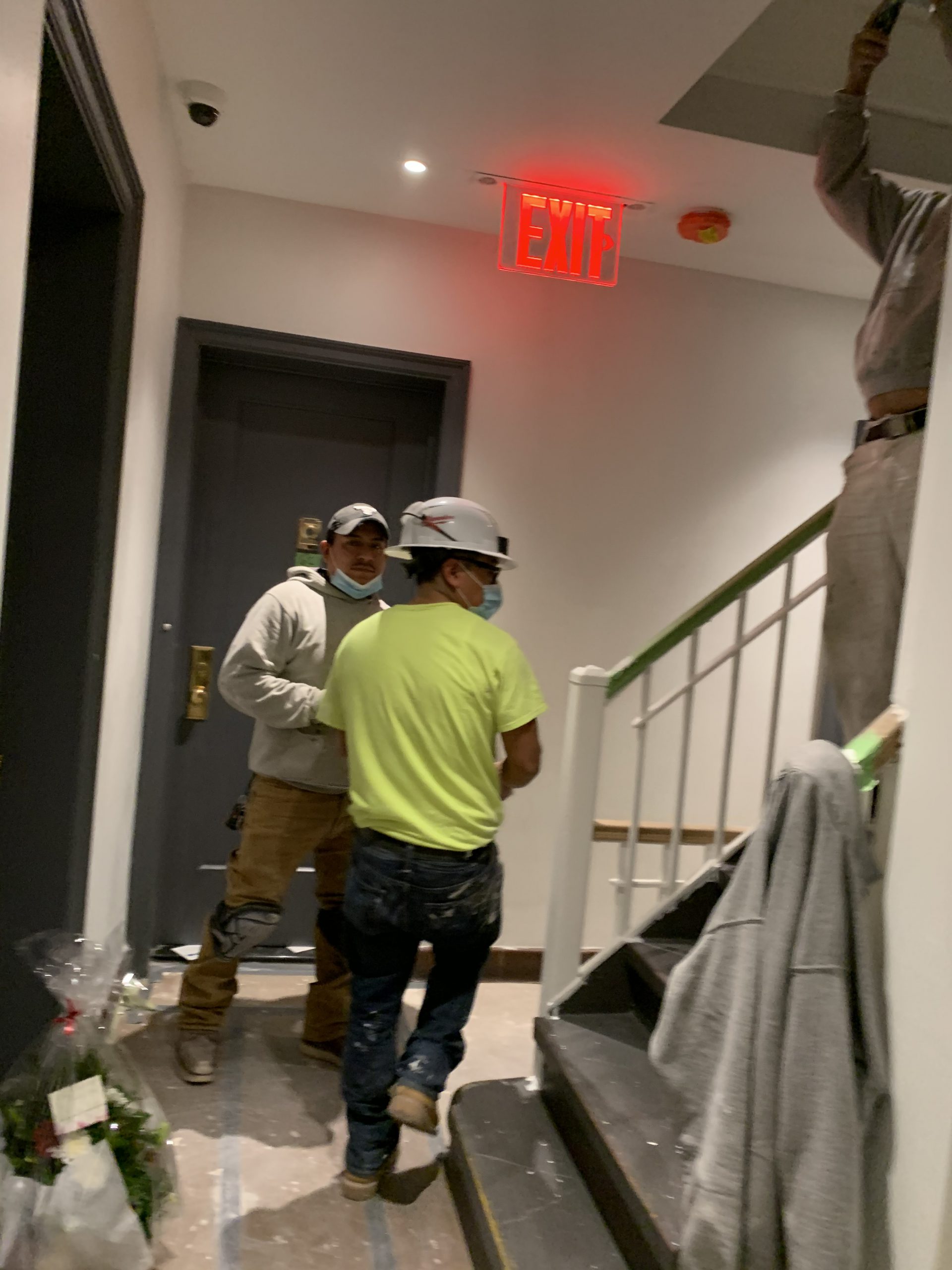
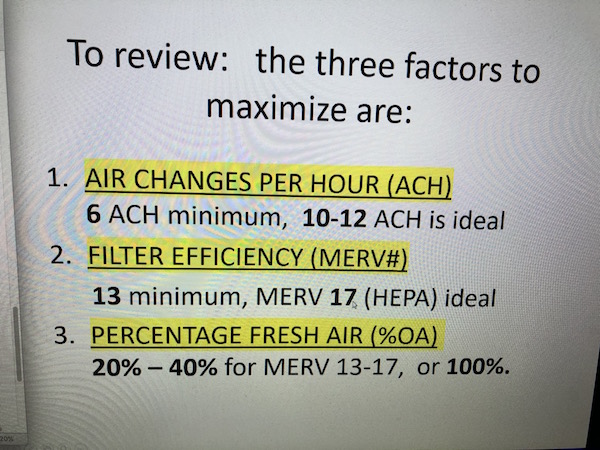

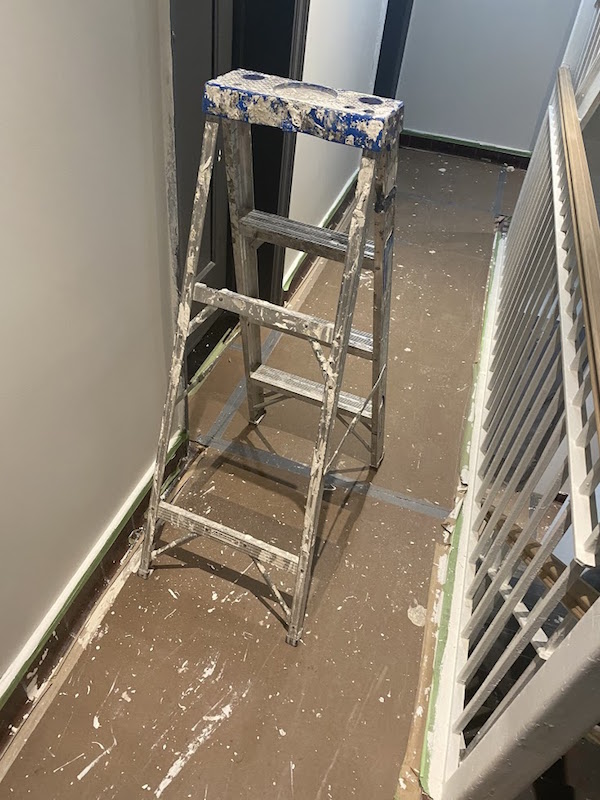

READER COMMENTS (1)
Great article! It gives information about an issue that most of us knew nothing about. The article gives the reader a heads up to a problem that, without our knowledge, puts the residents of our apartments/homes, places of work, etc. at risk,
Despite the fact that the article includes numbers and acronyms that are difficult to understand, because we are neophytes to the issue, it does make us aware about something important to our good health.
I trust that the forum just finished, and the follow-up one to be held on March 13th, will provide an impetious for our elected City/State and Federal officials and the candidates now running for the the various offices, to put the ventilation situation on their agenda to what is needed to be done.
On a side note, the article mentions the need to do away with self certification as well as the need to have enforcement and not to let the offenders pay fines as cost of doing business. This is exactly what a Council of Chelsea Block Associations Task Force encountered when it dealt with the issue of bad landlords illegaly trying to evict tenants from their homes.
With regard to the ventilation issue, it is important to note that follow-up is needed to address the isue and to keep in the limelight.
Bill Borock
Council of Chelsea Block Association
Chelsea Community News is made possible with the help of our awesome advertisers, and the support of our readers. If you like what you see, please consider taking part in our GoFundMe campaign (click here). To make a direct donation, give feedback, or send a Letter to the Editor, email scott@chelseacommunitynews.com.

Pingback: 2324 Chelsea Tenants Assoc. Frustrated by Slow Rollout of Repairs - Chelsea Community News
Pingback: viplotto168
Pingback: blote borsten
Pingback: ดูหนังออนไลน์ใหม่
Pingback: kaws rocks | crumpets vape | guava gas strain |springfield farms carts | dmt vape uk | curepen legend og | mad river melts | buy dmt vape pen |kaws rocks weed | boutiq vapes |glo extracts | kaws weed | georgia pie strain
Pingback: directory
Pingback: rich89bet
Pingback: dig this
Pingback: where to buy albino penis envy
Pingback: stop screen recording
Pingback: buy lsd online
Pingback: Nails near me
Pingback: สินเชื่อโฉนดที่ดิน เพื่อนแท้
Pingback: nice dumps shop
Pingback: ดูหนัง
Pingback: ammo for sale
Pingback: sbo
Pingback: los cabos real estate
Pingback: sbobet
Pingback: What is magic mushrooms dispensary?
Pingback: fake tag heuer watches mens
Pingback: DevOps services company
Pingback: Landlord Promises Long-Overdue Repairs, Just Prior to Tenant-Led Protest – Chelsea Community News
Pingback: Chaturbate Jenniferbrad
Pingback: 링크집
Pingback: สล็อตแตกง่าย
Pingback: กล่องอาหาร
Pingback: 인싸홀덤
Pingback: Onion
Pingback: order psilocybe cubensis spores usa
Pingback: Bilad Alrafidain University |Bilad |Alrafidain |college students
Pingback: buy cvv dumps verified seller
Pingback: rolex replica v6 site_www.replica watch.info